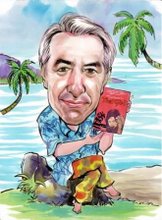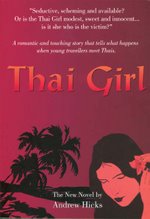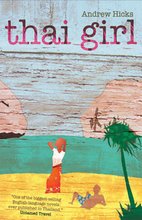



The next stop on our holiday was the city or town of Champasak where we were going to stay before visiting the ancient khmer temple of Wat Phu. I’d expected a city or town at least as Champasak is a major province and the place has an illustrious past, but all we found was essentially a village. It has little more than a single street running along the bank of the Maekhong river, which is hardly troubled by more than the occasional bicycle.
Near the village is the site of an ancient city many eras old that makes this the centre of a major civilisation. Then construction of Wat Phu was started in the sixth to eighth centuries, finally being finished towards the end of the Ankor era between the ninth and thirteenth centuries. Finally Champasak was an independent kingdom from 1713 to 1811 and actually had three kings. Ultimately absorbed into the Kingdom of a Million Elephants, the royals were not forgotten and two large colonial style villas from the early twentieth century still stand next to their wooden country cousins in the main street.
This is indeed a laid back place in which a weary westerner can disappear from view. To get there, we crossed the great river which was brown and wide and fast flowing on one of the rough steel catamarans that carries trucks and traders to the other side. There we stayed at the Suchitra Guesthouse and had a comfortable air conditioned room for about US$15. The place is run by a large extended family, and we sat on the wooden terrace overlooking the brown expanse of the river and ate extremely well s they cooked and served and chatted. They are among the most well to do in the village, pulling in some tourist dollars, but even so with local wages at about US$40 a month they were distinctly interested by the idea of going to work in Thailand.
Wat Phu, the object of our visit is only a matter of minutes away, a run along rutted roads that bring you to the steep hillside where at first there seems very little to see, except a vehicle park and a modern museum building which has a good display of stones and carvings saved from the ruins.
While the central Khmer temple of Ankor Wat itself in Cambodia is monumental, Phimai and Khao Phnom Rong in Thailand are huge and well restored and teeming with people. On the other hand, Wat Phu is a quiet and romantic place of mossy ruins hidden under frangipani trees, where from time to time you discover as if for the first time some hidden corners and spectacular carvings. It’s a steep climb and for example, at the top level behind the main sanctuary there’s a Khmer style Trimurti of the Hindi triumvirate of Shiva, Vishnu and Brahma carved into the living rock.
Unless you follow the slightly trodden paths between the trees you will not find the strange carving of a crocodile which is incised into the rock rather than standing in relief. Its purpose is unknown, though it’s said that a man would fit into it and that human sacrifice might be indicated. Such a thought is so at odds with the peaceable atmosphere of the temple today.
We only had time for one full day in Champasak but it’s the sort of place one could settle into for some time with some books and music and explore the locality by bicycle, if boredom is not a concept that could spoil the innocence of the place. I’d love to soak it all up at leisure some time.





2 comments:
What a wonderful location, peaceful, quiet and tempting the traveller to linger. If you were to walk into the top photo, towards the exit of the temple compound, you can turn right down a small and rather muddy track, signposted "Bang Sida" (if memory serves well). This was the old road or footpath to Angkor. There is not much left of the monument at Bang Sida, but it is seldom visited and in that isolation it is possible to imagine that during the Angkor era it looked very much the same. I don't think I can post a photo here, but I will email one or two.
Hi Andrew,
Very nice article, hope you and your wife had a nice time there.
Click here to read best Laos Travel Guide.
Take care and enjoy life!
Post a Comment